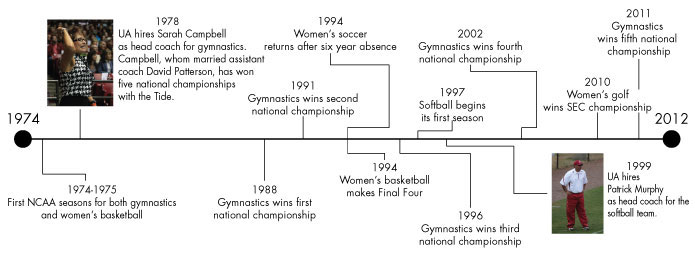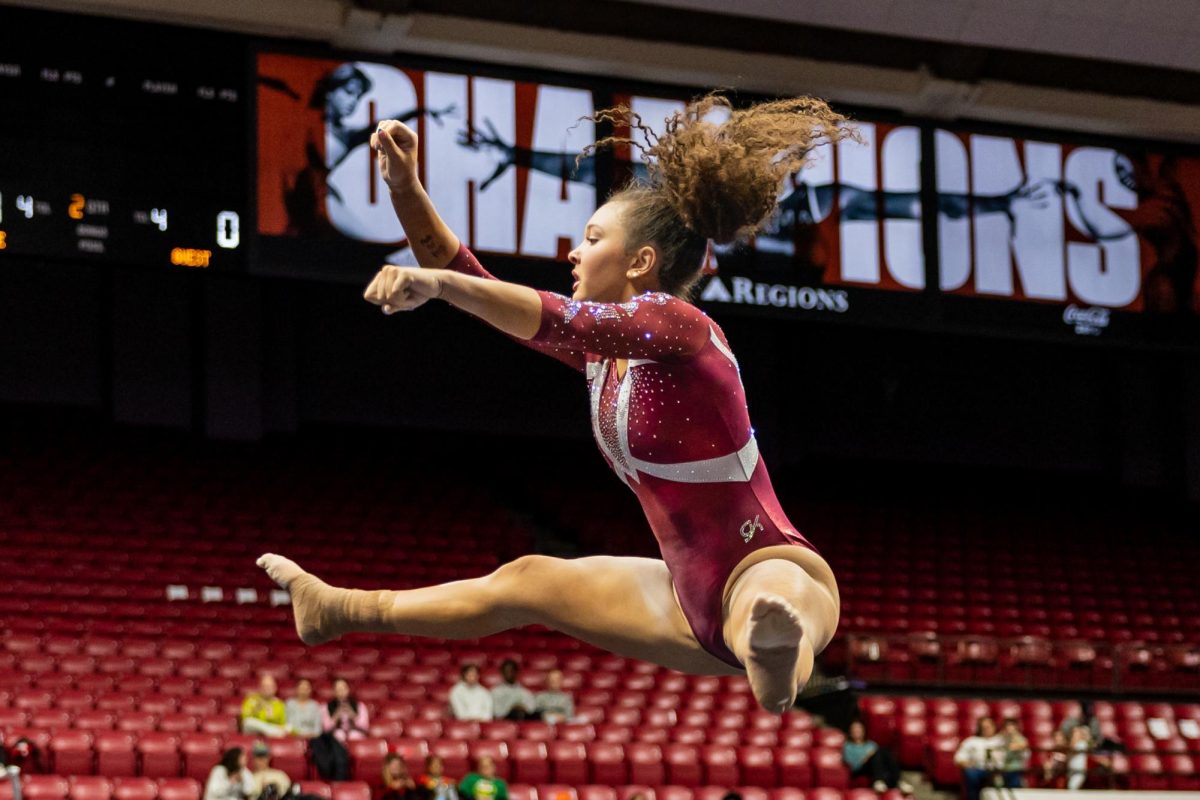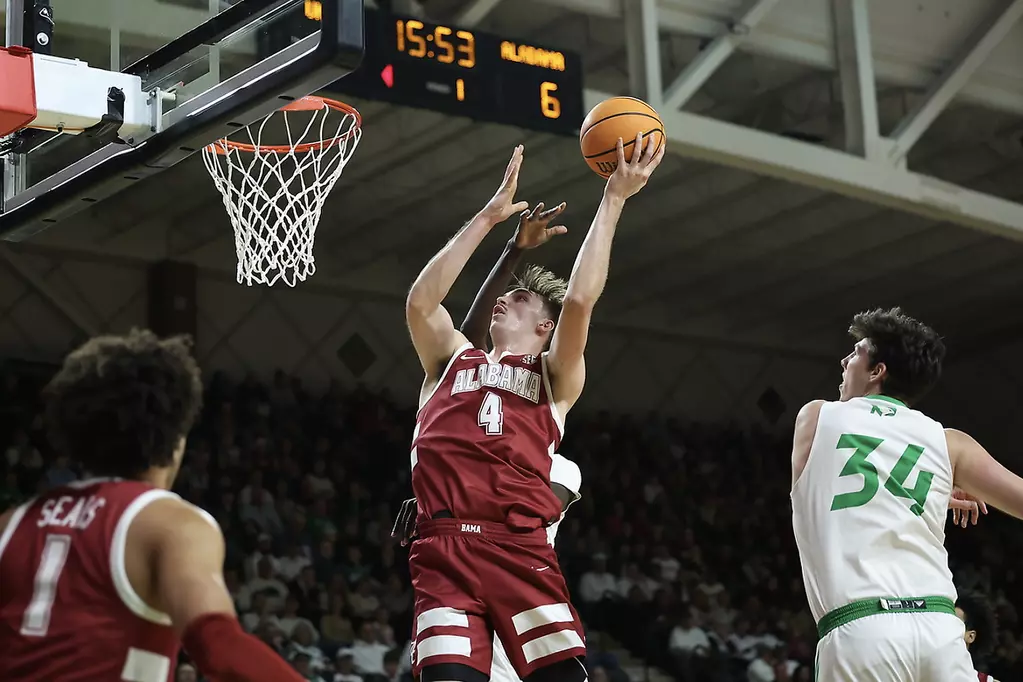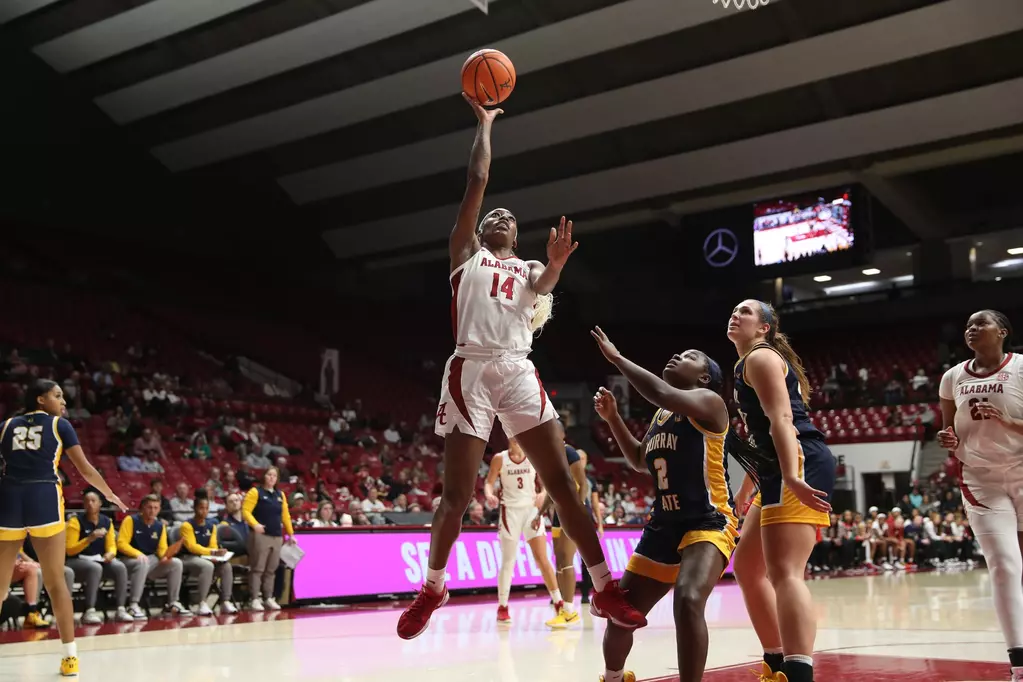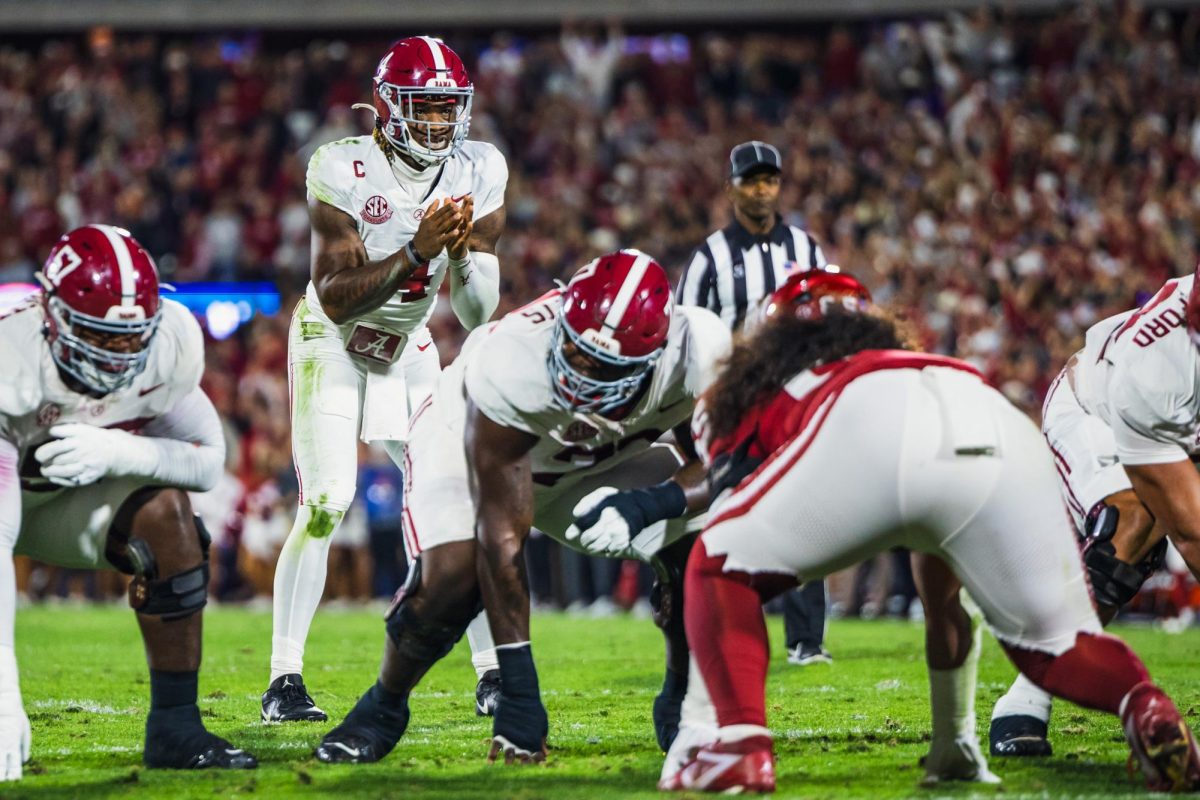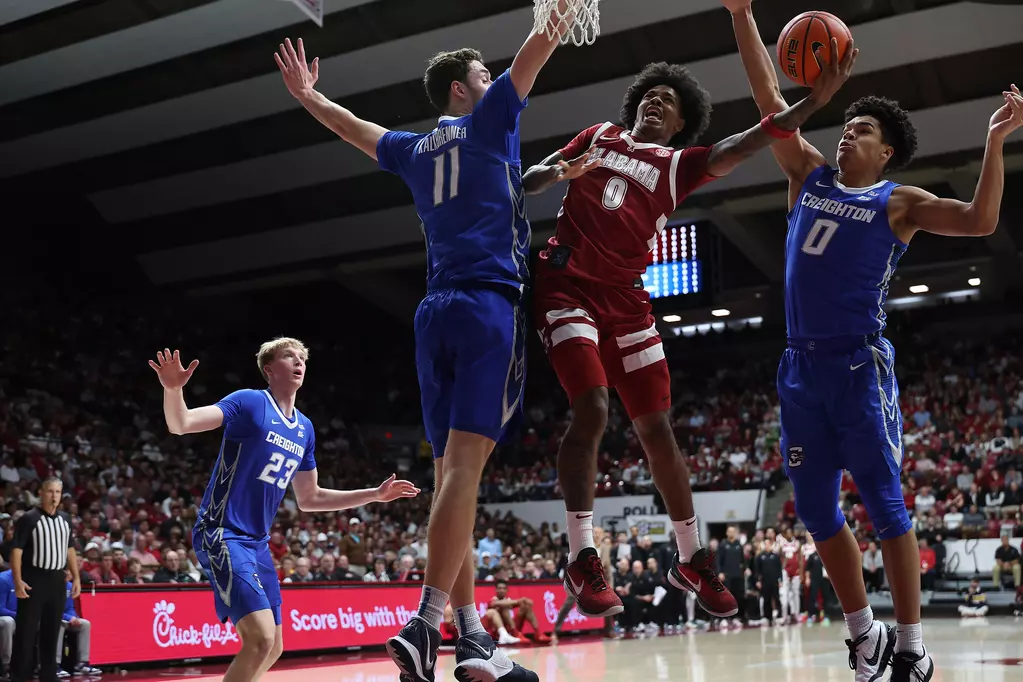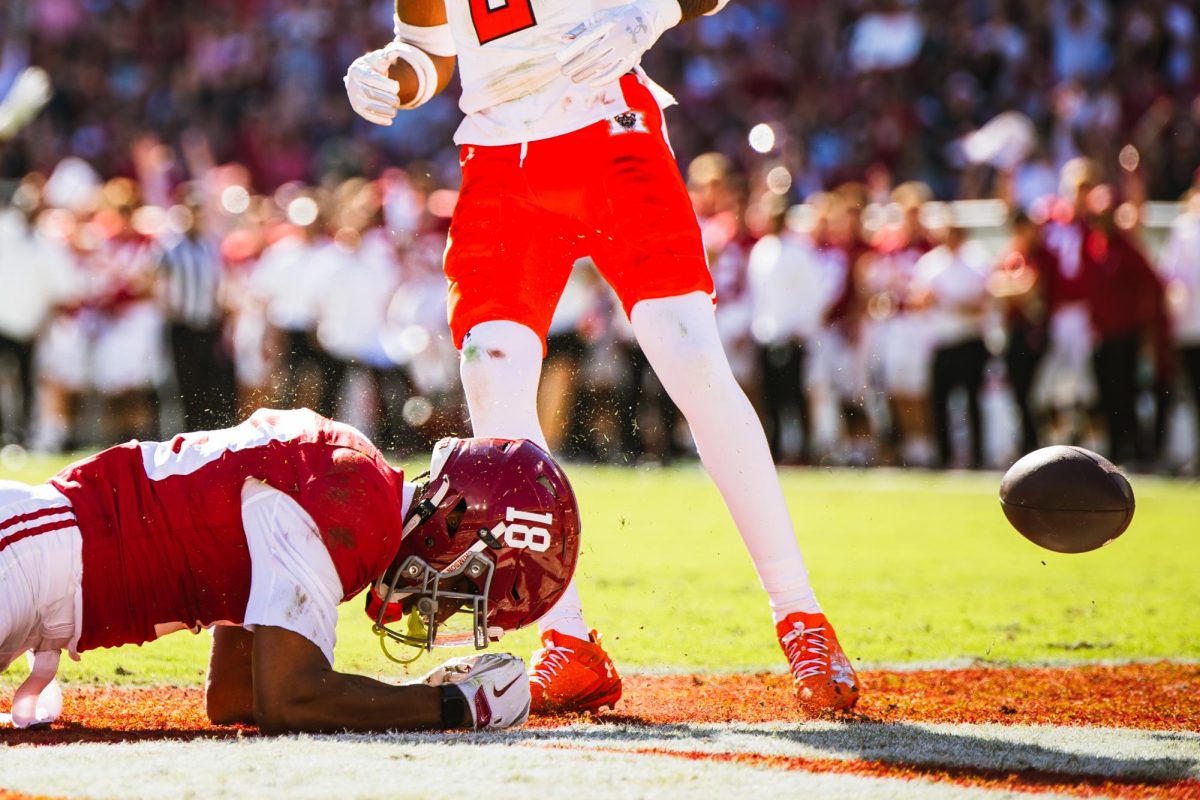 Women’s athletics at the University of Alabama has come a long way. It was not that long ago when there were technically no organized women’s sports team on campus. Today, the 11 NCAA women’s athletics teams outnumber the eight men’s teams. Women did not compete on the NCAA level originally but began under the Alabama Women’s Intercollegiate Sports Association. Ann Marie Hicks was UA’s first women’s sports head director, according to a report on the Beginning of Women’s intercollegiate sports at the University of Alabama.
Women’s athletics at the University of Alabama has come a long way. It was not that long ago when there were technically no organized women’s sports team on campus. Today, the 11 NCAA women’s athletics teams outnumber the eight men’s teams. Women did not compete on the NCAA level originally but began under the Alabama Women’s Intercollegiate Sports Association. Ann Marie Hicks was UA’s first women’s sports head director, according to a report on the Beginning of Women’s intercollegiate sports at the University of Alabama.
“Like anything, when there are more resources put into something, the expectations change and increase,” said Marie Robbins, associate athletics director. “And so, I think as women’s athletics began to get more resources and opportunities, then the expectation level for success for women’s athletics also increased, and rightfully so.”
Robbins is a former UA female athlete. She led the gymnastics team to the national title in 1988 and two SEC championships while in an Alabama uniform.
The gymnastics team has won five championships since it began competing in the fall of 1972. Terry Bryson was the first coach, and now Sarah Patterson is leading the Tide in her 34thseason. She began running the gymnastics program right after graduating college.
“At the end of [my first year], it was the first time that we had ever not had a losing season,” Patterson said. “So, Coach Bryant decided we would keep the program and we would add scholarships to it.”
The success of women’s programs, including the addition of funding and scholarships, can be traced to Title IX of the Educational Amendments of 1972. The law requires equality among different genders. Robbins said early on, some women’s teams were merged with men’s athletics departments, and coaches of women’s teams coached many sports.
“Over time, with the effects of Title IX, now you see there are head coaches of women’s sports,” Robbins said. “I think, similarly, in the early years, coaches might’ve been graduate students . . . now they’re full-time and well-paid. I think all of that is a natural result of Title IX, but it didn’t happen overnight.”
The 1970-1971 school year was the first year UA had official organized women’s sports. They were volleyball and softball. Today, the University has basketball, rowing, swimming, diving and eight other sports for female athletes.
Though football may seem to reign supreme at Alabama, Robbins says the athletic department aims for fair treatment of all sports.
“Being that Alabama is predominantly a football school, you would think that women are not treated as good as the men, but that is not the case,” said former women’s basketball standout Tierney Jenkins. “I was treated great, and I was never shown that they cared more about men’s athletics.”
Alabama’s women’s teams are competing for championships year in and year out, and the culture keeps growing richer.
“I think, ultimately, the institution decides at what level to fund and to compete with their women’s programs,” Patterson said. “…We want the same experiences for our female student athletes as we want for the men.”
Former All-American gymnast Morgan Dennis said, “[Women’s athletics] are important because they should be recognized. In the sports world, females are capable of a lot of things, and I think that’s special that now, through everything that we’ve been through with the NCAA and the University and just all those rules passed for us, to be able to compete in collegiate athletics is really special. I do think it’s something that needed to be done.”



